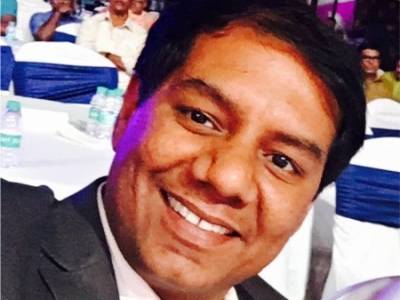How broadcasters can better leverage the growing clout of FTA channels
Free-to-air (FTA) channels have been growing from strength to strength, especially post the introduction of BARC India television ratings for rural India. As per the Rural+Urban ratings, five of the top 10 Hindi GECs are FTA channels. In fact, the top 4 channels are FTA (Week 17 – April 21-27). In the last three weeks, Rishtey has chalked up an impressive growth – climbing up from No. 7 position to the second spot in Week 17.
Besides GECs, a large number of News and Music channels today are FTA, having made the switch from pay. Several broadcasters have also launched FTA movie channels.
According to a forecast report by E&Y, free TV viewership in India is set to reach 46 million households by 2020. The increase in the number of FTA channels has also led to a significant rise in viewership for genres such as Hindi GECs, Hindi movies and, primarily, the Hindi news genre, in which FTA channels command 81 per cent of the total viewership.
According to an ICICI Securities report, the FTA advertising market was expected to reach Rs 800 crore-Rs 1,000 crore by end of 2017. This market was pegged at Rs 400 crore-Rs 500 crore in 2016.
FTA channels have been mostly airing content that has already been aired on the mainline GECs. In fact, Zee Anmol has seen great traction airing the old episodes of popular daily soap, ‘Kumkum Bhagya’.
However, Star Bharat has been the bucking the trend and has been launching original content on the channel. The FTA channel has been doing quite well in the Rural+Urban markets and for several weeks has been in a see-saw battle for the numero uno spot with Zee Anmol. In Week 17, the channel was placed third. Its show, ‘Jiji Maa’ was the fifth most watched show on Hindi GECs in Rural+Urban.
This brings us to the question – given the growing viewership numbers and the demand for fresh content, what is keep the broadcasters from refreshing their content strategy for the FTA channels and introducing more original content? How much of an investment would it require? Will it cannibalise on the viewership share of the mainline channels?
Adgully spoke to some leading broadcasters and media experts to explore the whole dynamics of the FTA channels, their strategies and the road ahead.
The growth drivers
According to Neeraj Vyas, Senior EVP & Head, Sony SAB and MAX cluster of channels, FTA channels will always be at the top of the charts because it is an urban + rural number that we are looking at, which is something that pay channels do not get beyond a point. “Many FTA channels are available in pay markets on DTH platforms as well as on cable, but the same thing is not possible on the DD Free Dish. The accumulated numbers will always look big if you look for U+R reality. But the fact is we look at our numbers essentially only on a pay base for HSM. It is slightly off comparison in terms of the numbers that you see,” he explained.
Mamatha Morvankar, Chief Investment Officer, Omnicom Media Group India, pointed out that the growth of the FTA channels is driven by rural India, where both cost and distribution of TV content are limited and these channels have given audiences more content options.
She noted, “In fact, almost 65 per cent of the viewership of these channels are from rural India, where audiences have been given more entertainment options and are exposed to content they have never seen before. The fact that these audiences have recently been included in the TV measurement system has helped us get a better understanding of this impact.”
Echoing with similar views, Aparna Bhosle, Business Cluster Head - Premium & FTA GEC Channels, Zee Entertainment Enterprises Ltd, observed that penetration of television in Tier 2 and Tier 3 markets due to further stages of digitisation have added to this. “With more households in remote rural areas of the country having access to television shows through FTA DTH and therefore FTA channels, it increases the channels’ penetration, thereby engaging a much larger audience base. The increased weightage that Rural has in BARC also contributes to the FTA channel rankings,” she added.
While further elaborating on the topic, K Srinivas Rao, National Director – Buying, Mediacom, mentioned that FTA channels usually cater to the rural audience base. If one looked at the viewership trends, most of the viewership is skewed towards the rural markets. Apart from this, there have been factors like fragmentation of viewership, some of the mainline channels having distribution issues and a few with content which didn’t click with the viewers. The combinations of these factors have led to a growth of FTA channels.
Is the current content strategy enough to sustain the FTA channels?
Speaking about Zee Anmol’s performance, Aparna Bhosle said, “We showcase a bouquet of specially curated shows that have been created for our pay channels like Zee TV, &TV, Zee Bangla, to name a few. For our viewers, who diligently tune in to Zee Anmol, this content is fresh and new and selected keeping in mind their taste. In the medium run, we see this as a sustained programming strategy because we have access to a really large library at ZEEL, which through our FTA offering reaches out to a fresh audience base. This being said, I would like to add that this strategy may evolve with changing government policies and usage and attitudes of our target audience. The strategy may need to be re-evaluated in the future. But for now, as Zee Anmol, based on this strategy is the leader in HSM Rural, we will continue to do what we are doing.”
Neeraj Vyas felt that at some point people would create something new for FTA. But right now, it was a wait and watch game. “There is a lot of ambiguity and not too much of clarity in terms of the way ahead. We clearly foresee a new trend in FTA profile and that’s why we are heavily invested. As an organisation, SET has 3 FTA channels. We can all create fresh content for FTA channels, but it’s a perspective game,” he noted.
Mediacom’s Rao pointed out that as the growth had been majorly on the back of rural markets, the current content strategy might just work for the next couple of years, until and unless there is a drastic change in the measurement system or BARC’s sample distribution.
He further said, “Most of the brands who do not consider FTAs, do so due to the markets where FTAs perform better not being their key markets. Developing fresh content might not result in changing the way brands look at FTAs.”
On a different note, Mamatha Morvankar mentioned, “With digitisation and data accessibility accelerating in rural India, we will soon see audiences being exposed to all forms of content and we may even see them shift their entertainment preferences to other screens. This, in turn, will impact the FTA channels. Data accessibility will also give rural audiences access to the latest content on OTT and live TV channels, providing them with a wider plethora of content choices – a development that can be expected in the next couple of years.”
She further said that FTA channels would need to develop fresh content in order to compete with other content platforms and stay relevant in consumers’ lives. For advertisers, these channels would only become relevant if they added something different to their media plans – that is, if they brought certain audiences or markets, as well as cost efficiencies. “Channels are already using a fremium model; we saw this with the launch of Star Bharat - an FTA channel across the DD Free Dish that also commands ‘A’ rate on other DTH networks, showcasing a new go-to-market approach,” Morvankar added.
The revenue game
Sony’s Vyas stressed on the importance of understanding that TV penetration in rural is only 52 per cent, while for urban it is already 87-90 per cent. According to him, there is a kind of saturation in the urban markets, but in rural, with 52 per cent, there is a lot of potential.
He further explained, “There is an ambiguity and lack of clarity on our existence on Free Dish. Secondly, in terms of monetisation I don’t think we have been truly able to monetise our revenue from that zone. Because, today also these FTA channels are used to sweeten the CPRP deals and most of these deals are essentially being used to sweeten the urban deals that most agencies are doing. On FTA, the agencies are looking at urban deliveries, which should not be the case. It should be U+R very clearly, because a lot of these channels also deliver in urban homes. So, what’s happening is that agencies and clients are using these deliveries to lessen their burden of their urban CPRP deals. With all this happening, we clearly are not getting the true value for the numbers that we are delivering.”
Omnicom’s Morvankar added here that currently, FTA channels were investing in advertising only during launches, and these were predominantly through their own networks and localised activities to build awareness and traction. However, if these channels start investing in content, which will need much higher levels of audience pull and return on investments, then one would see stronger marketing and advertising initiatives across these channels.
According to Bhosle of Zee, FTA channel is a platform which provides content, and there is a set of new audiences across newer markets who are interested in viewing the same with similar passion as that of any entertainment channel. “Hence, we are selling these channels at a similar price point as that of any General Entertainment channel. More importantly, marketers today are interested in new audience sets and new markets for their product consumption and we are aggregating them through our FTA platforms, hence there should be no differentiation in the revenue generated,” she maintained.






















Share
Facebook
YouTube
Tweet
Twitter
LinkedIn